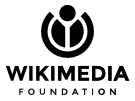
Error
Too Many Requests
If you report this error to the Wikimedia System Administrators, please include the details below.
Request served via cp3073 cp3073, Varnish XID 926914079
Upstream caches: cp3073 int
Error: 429, Too Many Requests at Mon, 21 Apr 2025 15:26:38 GMTSensitive client information
IP address: 2001:67c:2f4c:2::329